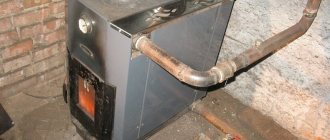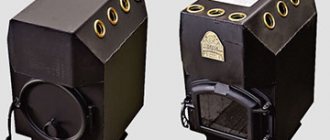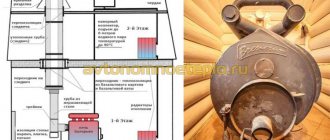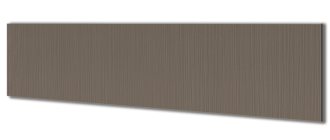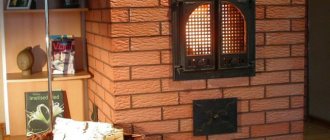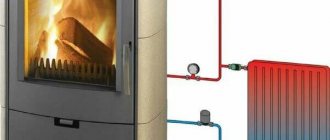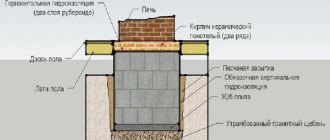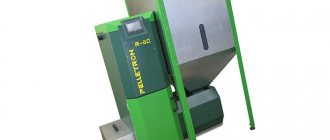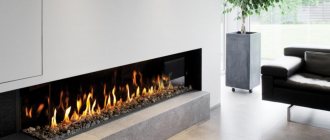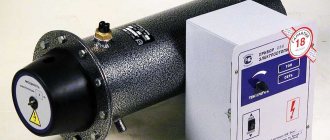Initial data of a frame house
I have a frame house with a total area of 157 m2, two full floors, floor-to-ceiling windows on the first and second floors. The thickness of the floor insulation is 20 cm, the external walls are 20 cm, the ceiling is 30 cm. All windows face south. Three-chamber double-glazed windows, rehau profile. Two entrance doors with thermal break, insulated.
Main characteristics
Firebox for a pellet fireplace
Pellet-type fireplaces are similar in appearance to traditional ones, but have a number of differences. The firebox for them is always closed, made of heat-resistant glass. The operation is controlled by software, the display is located on the cover of the device. With its help, you can set a specific operating mode, the desired air temperature, automatic switching on and off.
The external design is varied, you can choose the desired option for any interior style. All pellet fireplaces are made of stainless steel with elements of heat-resistant glass. Manufacturers offer one-piece boilers or separate fireboxes that can be built into any portals, even those made by yourself.
A pellet stove requires a vertical or horizontal chimney. You can connect the furnace outlet pipe to the ventilation shaft, but make sure that it does not become clogged and provides good draft. Often such options are installed in the dining room or kitchen, due to the proximity of ventilation ducts.
Choosing a pellet fireplace for heating a frame house
When choosing a pellet boiler, I was horrified by their appearance - such a monster should be placed in a separate room and people who need to be scared should be allowed there on a tour. I didn’t want to have a separate technical room at all: our house is not big. I wanted to have a fireplace with a live fire. So in the evening, turn off the light in the living room and sit on the sofa, drink hot wine, and look at the reflections of the fire on the walls, out of the corner of your eye seeing snowdrifts and snow-covered conifers outside the window.
A solution was found - a pellet fireplace with a water circuit - an aqua fireplace. I also immediately chose the model - Laminox ESTER IDRO 15 “all in one”:
— safety valve — expansion tank — circulation pump — automatic air vent
According to my calculations, a power of 15 kW was enough for a house. But after calling a company that exclusively supplies Italians and deals with connecting and servicing aqua fireplaces, my choice was finally formed: LAMINOX ELISA PHANTOM IDRO 16 - a flat burgundy-colored aqua fireplace with a vertical outlet.
Well, I can now say that the choice was right. The aqua fireplace works quietly - the monotonous rustling of the fan. You can't hear the pellet feeding screws at all.
The chimney is 8 cm - I ordered a 10 cm sandwich, painted brown - it fits into the future interior. The chimney on the roof does not smoke and does not give itself away in any way. Sometimes with a gust of wind you can catch a sweetish aroma - this is what a good Italian liqueur smells like.
At night I see reflections of flames on the windows of the first floor - while the house is drying and finishing, the aqua fireplace is working around the clock. Consumption of pellets (I bought 2 tons for testing) per day, one bag of 15 kg. In the future it will consume less.
The aqua fireplace is controlled automatically. 5 buttons and menu. You can set the combustion power and the room temperature that the aqua fireplace will maintain.
The only inconvenience: the aqua fireplace hopper for pellets is 15 kg. That is, you have to add pellets once a day. Therefore, despite the fact that you can connect an Internet module to the aqua fireplace for remote control of heating (for example, while in Thailand a few days before arrival, set the temperature in the house to 23-24 degrees), this task cannot be realized due to the limited capacity of the bunker.
You can come up with something with installing an external bunker and increasing the volume to 200-300 kg, but it won’t be pretty. Therefore, here: - either beauty and aesthetics - or practicality
We chose beauty and aesthetics.
Installation process
As noted earlier, if you have a regular fireplace or stove in the room, installing this pellet system will not be difficult. To do this, you will need to dismantle the old heating system and install a new one in its place in the same portals. The chimney from an old fireplace or stove can also be used for a new one.
If you have not used a fireplace or stove before, you can install the entire installation from scratch. The installation process in this case is also not an impossible task. You should also pay attention to the proposed instructions, as they contain installation steps, as well as the main parameters and technical characteristics of the boiler, including maximum power and operating conditions.
Ash after pellets
Another important detail is ash. After combustion, the pellets turn into ash, and although I bought pellets stated in the offer as DIN+ with an ash content of 0.3%, more ash remains after their combustion. I would say 5 percent for sure. And you can’t determine this when purchasing. In addition, their humidity also did not correspond to the offer.
When burning two bags of pellets, the fireplace must be cleaned of ash. Ash in the ash pan and in the burner. A regular or special vacuum cleaner is used. But since the ash needs to be removed from the fireplace, you need to stop the fireplace and perform actions that the automation cannot do. Therefore, the aqua fireplace is not designed to operate autonomously for more than one day.
Fuel benefits
Going through all stages of production, this type of fuel not only increases its density, but also reduces humidity to 8-12%. The latter indicator plays an important role in the combustion process. Fuel with low humidity releases more thermal energy, hence the high efficiency. More complete combustion occurs with low ash content.
For comparison, we present the amount of heat released during the combustion of 1 ton of different types of fuel.
- 3500 kW/h - pellets;
- 7000 kW/h - hard coal;
- 2000 kW/h - firewood;
- 10,000 kW/h - gas and diesel fuel.
In fact, inexpensive pellets are better than firewood, but produce less heat compared to other types of energy sources. But here price comes into play.
What would you like to change in the aqua fireplace?
During the week of using the aqua fireplace, one of its shortcomings was revealed: a bag of pellets in a standard 15 kg package does not fit completely into the aqua fireplace bunker, so you have to leave 1/3 of the bag nearby and add more while the aqua fireplace is operating. This is a small thing, but it is very strange that the bunker was not designed to fit the standard bag capacity. Moreover, this implementation would not significantly affect the dimensions of the fireplace: 10 cm in height and 5 in width - it would not scare away potential buyers. Or in Europe, pellets are packaged in 10 kg bags?
Rational assessment is important
It is important to choose the right boiler
All automatic pellet boilers show good results. However, it is always worth remembering that the lower the degree of user participation in their work, the higher the price of the engineering solution. It is growing literally exponentially. Therefore, an automatic household pellet boiler must be chosen rationally.
Inexpensive units will require daily cleaning, reloading and ignition in a semi-automatic mode, but will be able to operate on fuel of any quality with a stable efficiency indicator. At the opposite end of the scale are fully automated systems. They clean, load, maintain and manage themselves. However, their cost is very high.
Pellet fireplace my review
Aqua fireplace has a number of advantages that cover minor inconveniences:
1) The dimensions and appearance of the pellet fireplace allow it to be installed indoors. As an element of the interior and a source of light heat, this is a real fireplace. 2) The water circuit allows you to connect an indirect heating boiler, heating radiators or heated floors to it. 3) Maintenance of the aqua fireplace is not difficult: pour pellets into the hopper twice a day, turn it off once every two days and vacuum the ash. 4) The aqua fireplace operates in automatic mode, maintaining the set temperature. Information about it comes from an external sensor. 5) The requirements for the chimney are democratic - forced exhaust and exhaust temperatures less than 100 degrees. There is a slight smoke only at the stage of ignition of the pellets at start. An 80 mm chimney can simply be taken out behind a wall, for example at the back of the house. 6) A pellet fireplace is fireproof - combustion is maintained by air injection by a fan. In the event of an emergency, it will turn off and the combustion will stop immediately.
Everything related to calculating the heating system in the house, choosing radiators, piping the fireplace and boiler is written on the Vinsky Forum.
Technological description of the device
The appearance of these installations differs little from standard fireplaces, although in terms of technological characteristics they have a more complex system.
* The first difference is related to the type of fuel; ordinary firewood is not used here, but special pellets are used. A special feature is the automatic supply of fuel to the compartment, which is very convenient for the consistency of the process and long-term combustion.
The second feature is associated with a closed firebox, which allows you to set the temperature yourself.
Inside the structure there is a heat exchange chamber filled with water. And along the walls from the fireplace there are steel pipes that transfer the coolant to the rest of the rooms.
